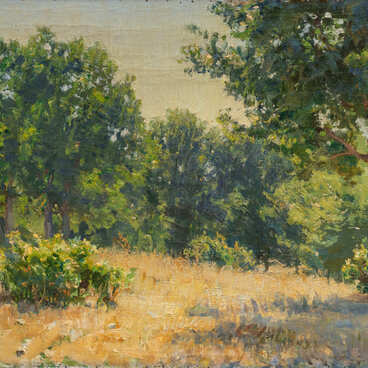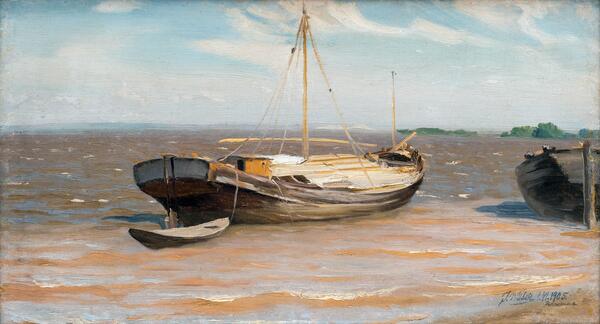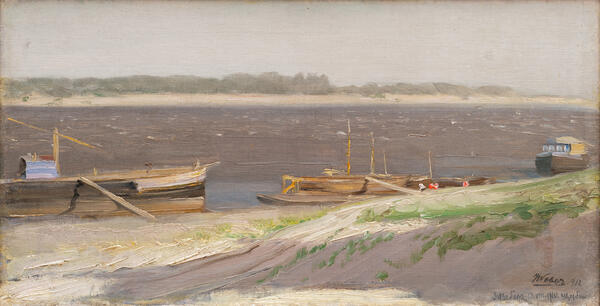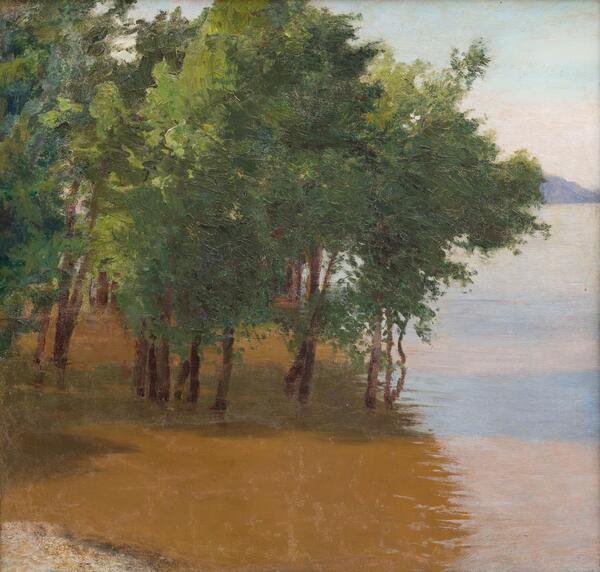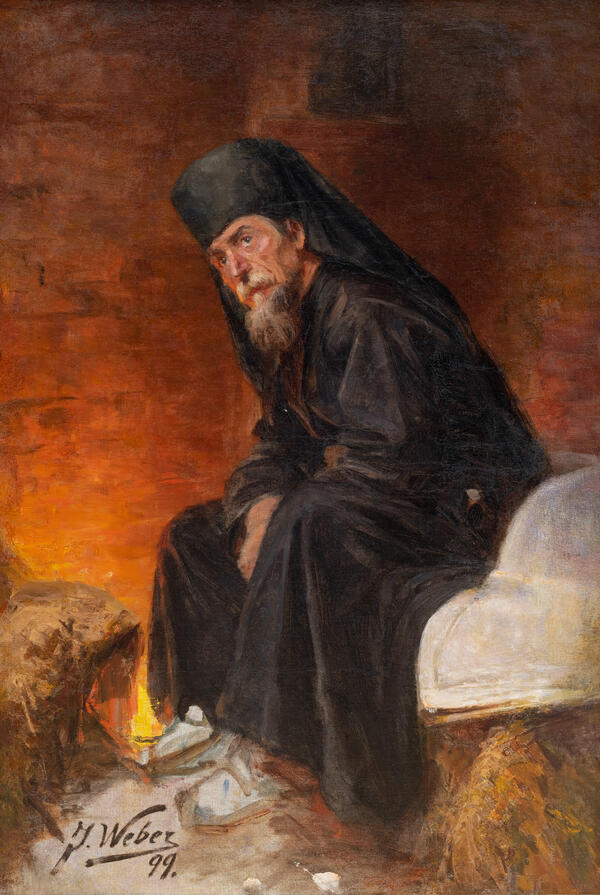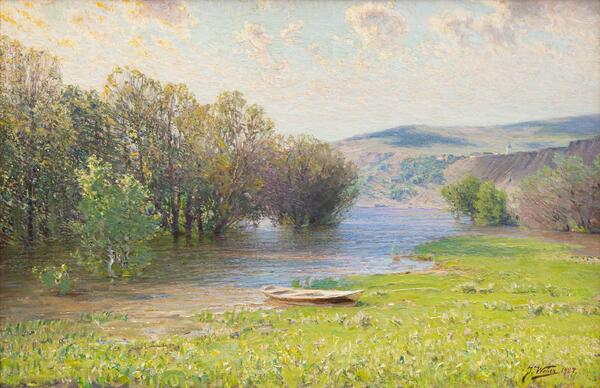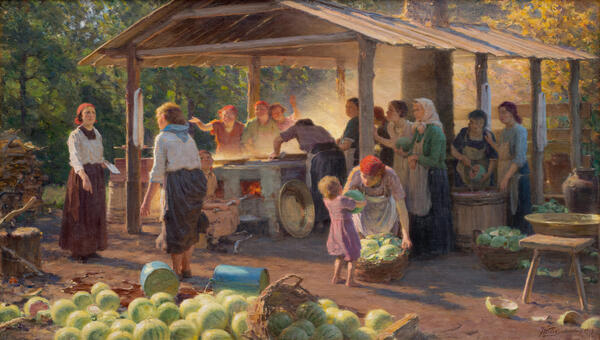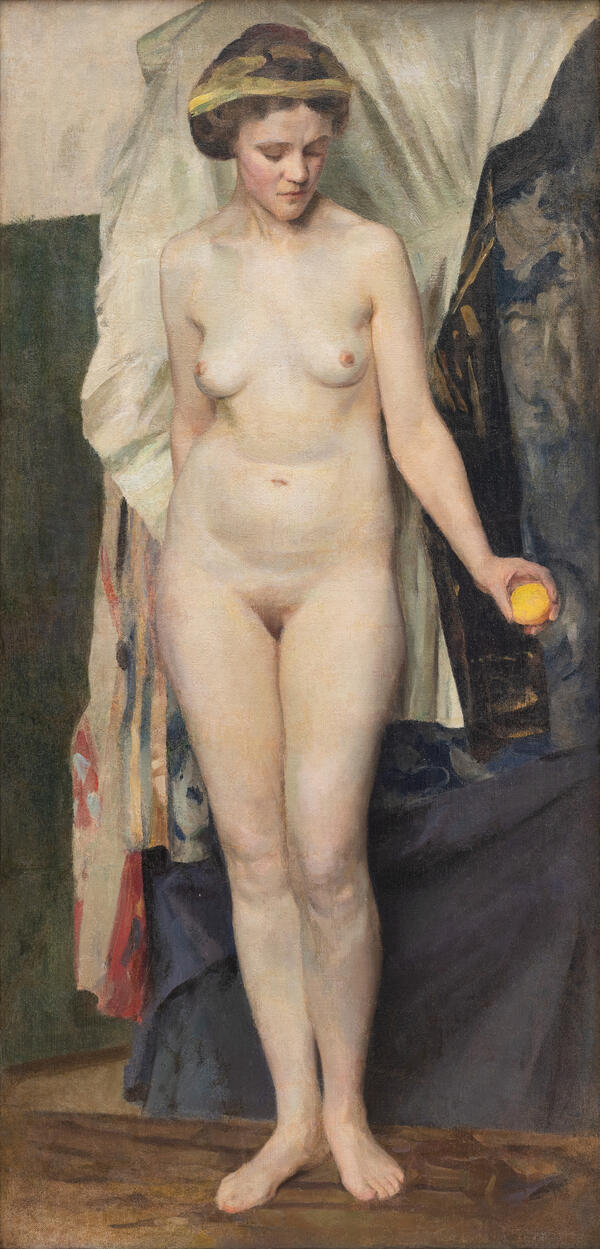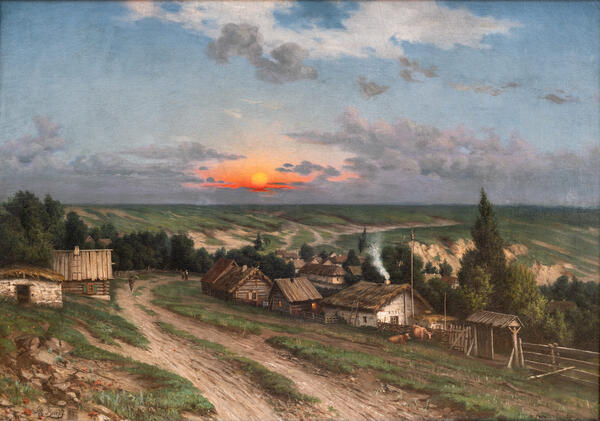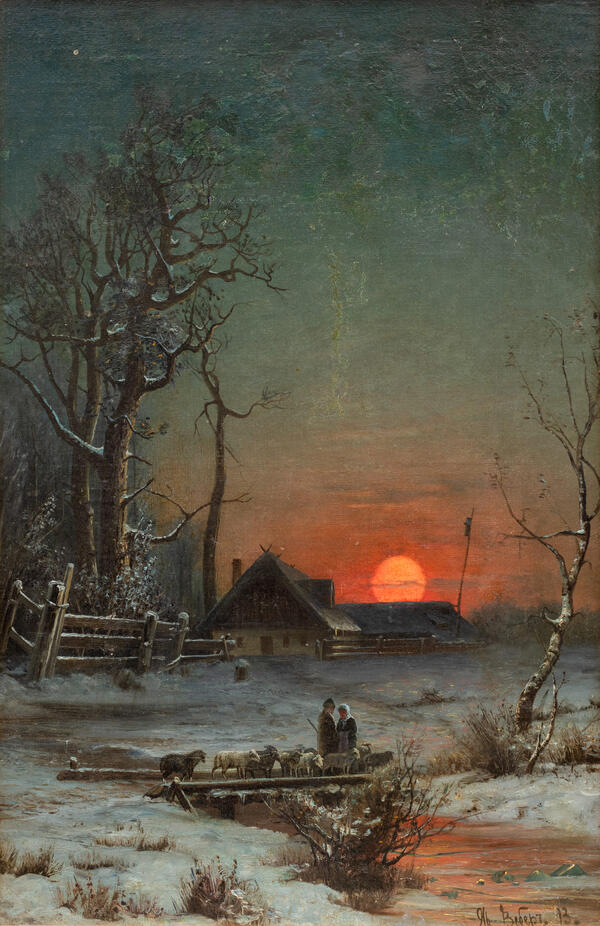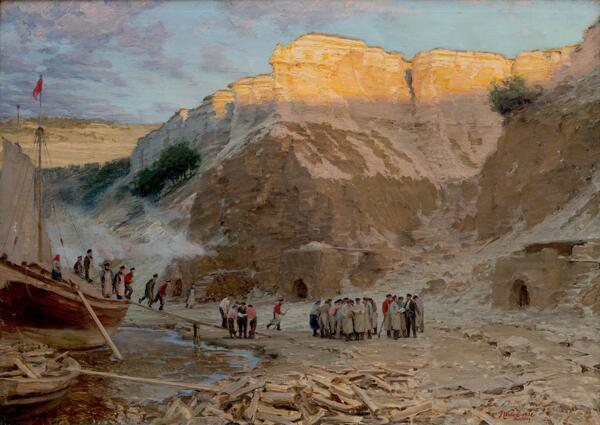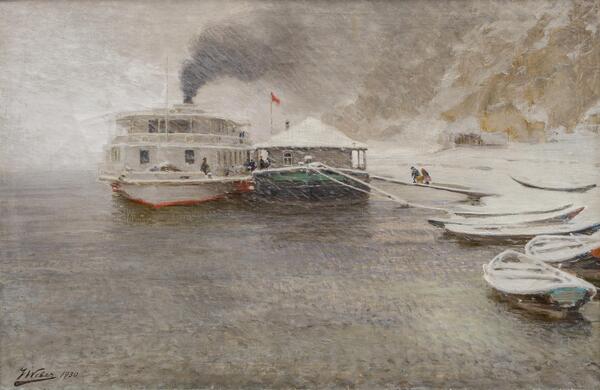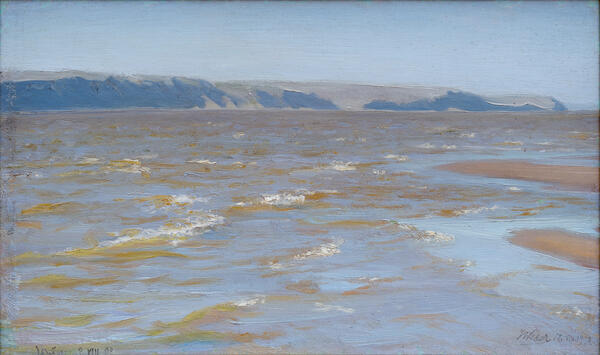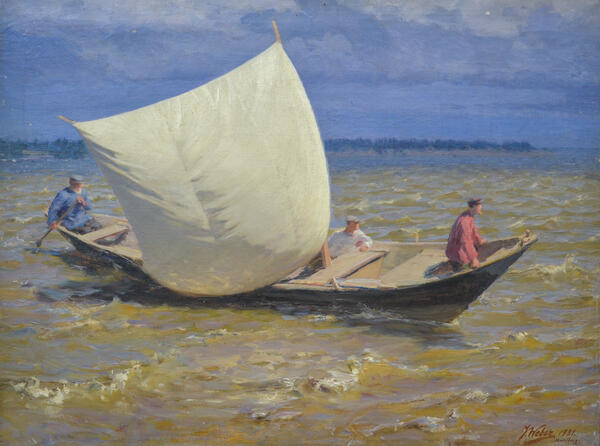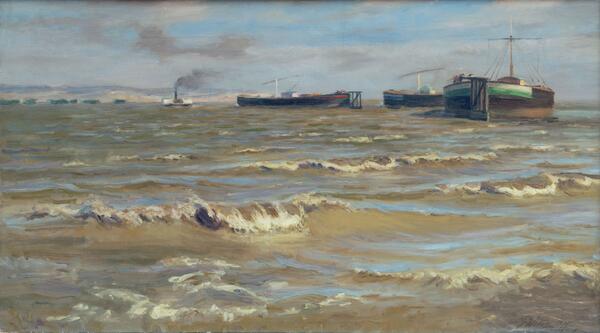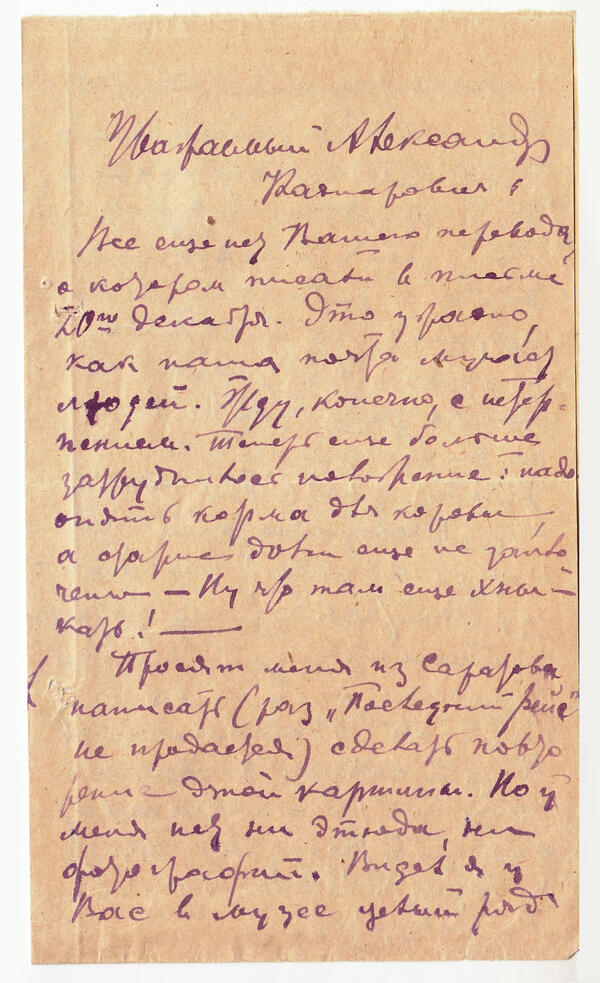The exhibition of the Engels Museum of Local Lore presents the painting “Ice Drift on the Volga” created by Yakov Yakovlevich Weber, a landscape painter, academic artist and teacher.
The painting was created in the settlement of Mühlberg (Shcherbakovka), where the artist lived with his family since 1915, after he successfully graduated from the Higher Art School at the Imperial Academy of Arts. For a long time, “Ice drift on the Volga” remained a “pure” landscape, which lacked genre elements. Early spring in gray-pearl colors, the air is filled with the first warmth, the ice on the river has begun to break at last, nature is awaiting changes and exuberant blossoms. Behind the river is a sandy island with a strip of trees. In the right part in the distance there is a view of the opposite shore in the haze at the horizon, against the background of blue sky with clouds. The painting is filled with anticipation of new life, renewal, the first warm rays of sunshine. However, during the restoration of the canvas it was found that the composition of the painting was changed twice. The first version of “Ice Drift on the Volga” had the following composition: a woman and a boy were depicted on one of the ice floes. Subsequently, the images of human figures in the painting were hidden by the artist.
In 2013, the Engels Museum of Local Lore, in cooperation with the International Union of German Culture, with the support of the German Embassy in the Russian Federation, organized an exhibition project “The Art of Yakov Yakovlevich Weber”. The exhibition was held in the Central House of Artists in Moscow. Thirty paintings by the artist from the museum’s art collection were displayed at the vernissage. Four works were presented in an updated form, after the restoration work carried out in the Central Museum of the Great Patriotic War. Among them was “Ice Drift on the Volga” of 1928.
During the work, the researchers of Weber’s work
decided to restore the painting to its original appearance. The genre motif
with two staffage figures on an ice floe was recreated using the surviving
contours of the figures and a photograph of an earlier depiction, which is kept
in the museum’s collections.


